Communication is key. In a lot of things, but definitely in scuba diving. Knowing (and remembering) your scuba hand signals is one of the best things any diver can do. And refreshing how to communicate underwater is one of the best things to help any pre-dive anxiety.
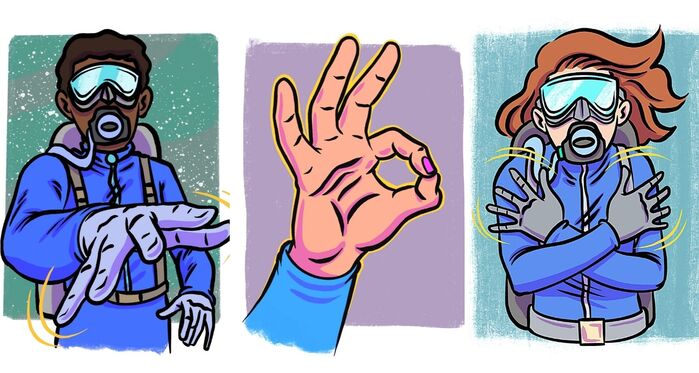
There are a lot of signals a diver can know – everything from gear related to navigation to “There’s a big shark behind you” – but there are crucial and common scuba signs that every diver should know and be familiar with using and recognizing.
You’ll learn most of these during your Open Water Course, but scuba divers can never review them too much. Most signals are universal, but it’s never a bad idea to agree upon certain ones before getting in the water – especially how you’re going to discuss air levels.
20 Scuba Hand Signals to Remember
1. “Boat”
This simple signal is commonly used to either indicate you can see the boat or that you are starting to head back to the boat. It can also indicate to other divers to watch for boats when on shallow dives or when ascending.
How to do it: Place your hands in a (wide) V-shape.
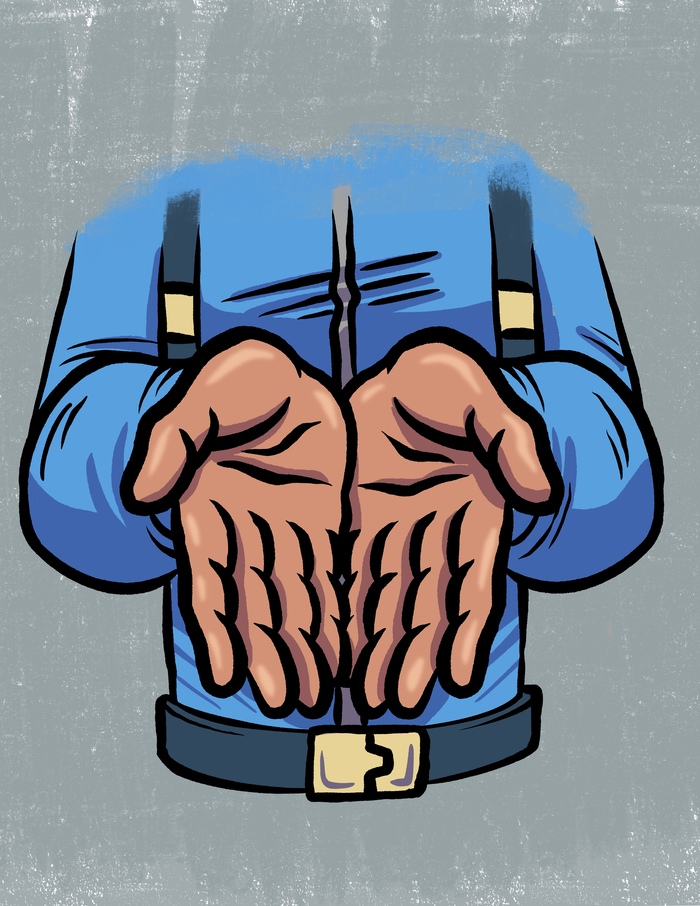
2. “Distress” (Surface)
Communicating that you’re okay or that there’s a problem is a little different above and below the water. This is mostly so that it’s easier for the captain or crew to see your signals from a distance.
How to do it: Wave your arm over your head continuously as if you’re waving to say hello.
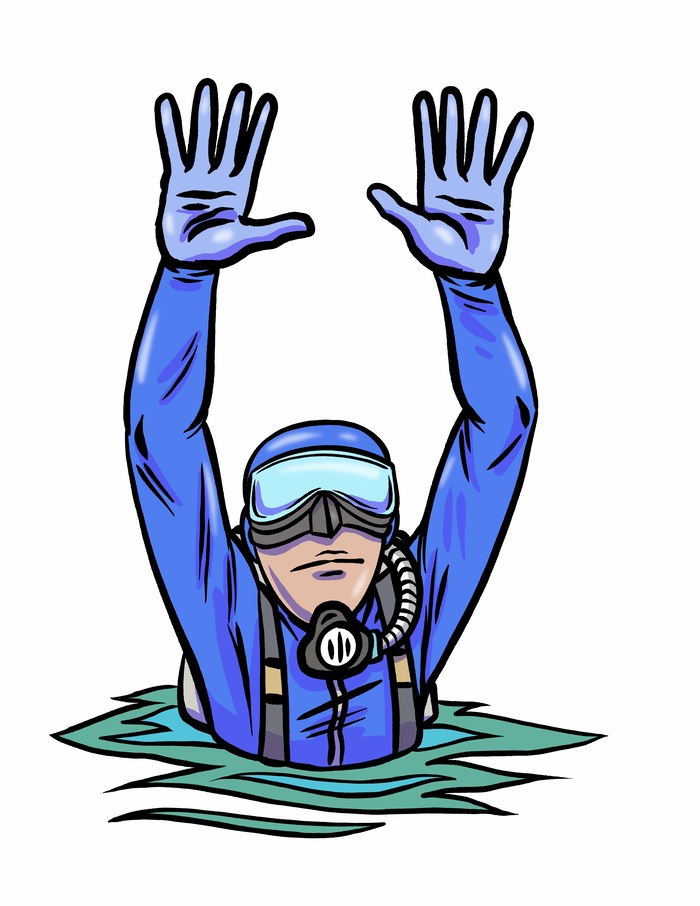
3. “OK” (Surface)
Use the surface OK signal to let the crew know you’re good after you enter the water, or if asked.
How to do it: Join both of your hands to create a ring over the top of your head. Alternately, you can put one closed fist on top of your head.
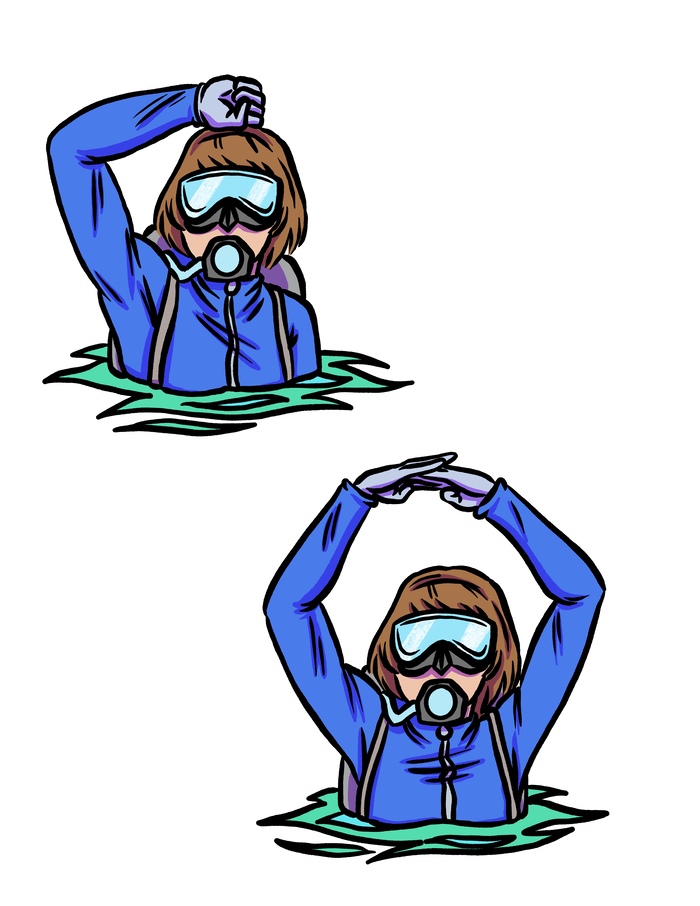
4. “Down/Descend”
The thumbs-down sign allows you to let your dive buddies know that you are ready to begin the dive. It also can be used to communicate you are good to go deeper.
Don’t confuse this sign with “Not OK” even though it may feel like second nature to use a thumbs-down signal to communicate something’s wrong.
How to do it: Use the thumbs-down hand signal.
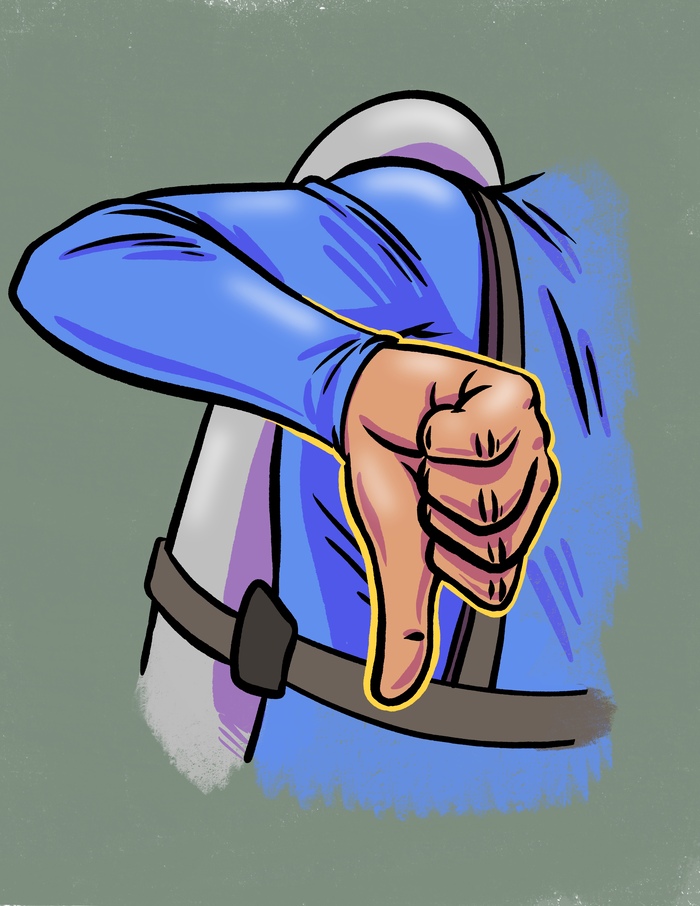
5. “Get With Your Buddy”
This scuba diving hand signal may not be used outside of instructors and students, but it’s still helpful to know. You never know when you may need to use it.
It may be used to remind students to stay close to their buddies. It may also be used to reassign teams in the middle of dives or pair up with another diver for a specific reason.
How to do it: Form fists side by side and extend index fingers.
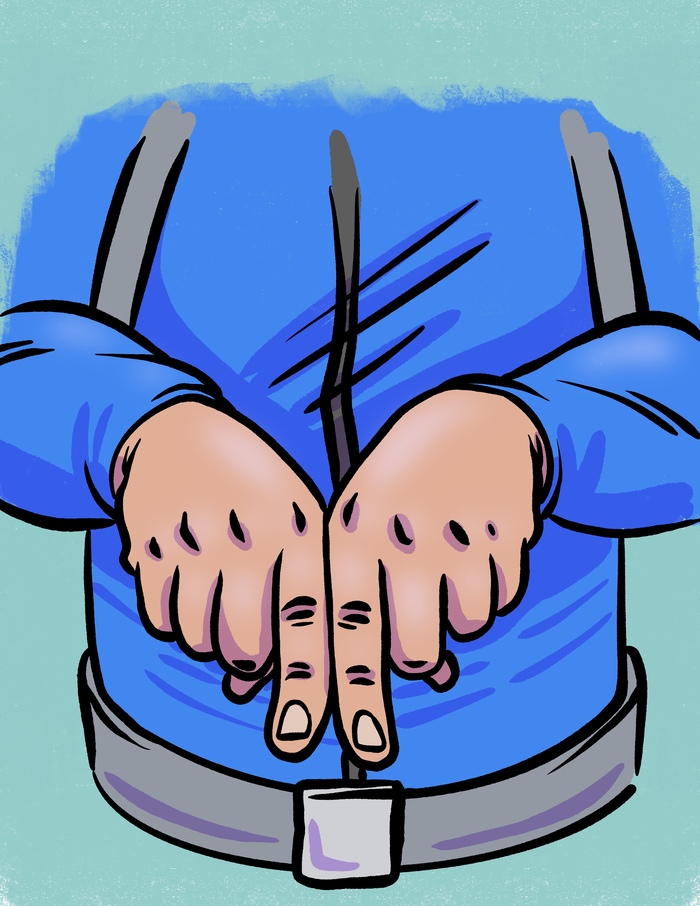
6. “I’m Cold”
Getting too cold while diving can lead to problems. When divers get excessively cold, this may lead to unclear thinking and their body may not eliminate absorbed nitrogen as efficiently.
If you or your dive buddy are feeling extra cold, use this signal and then end your dive with a normal safety stop and ascent.
How to do it: Cross your arms and rub your upper arms with your hands.
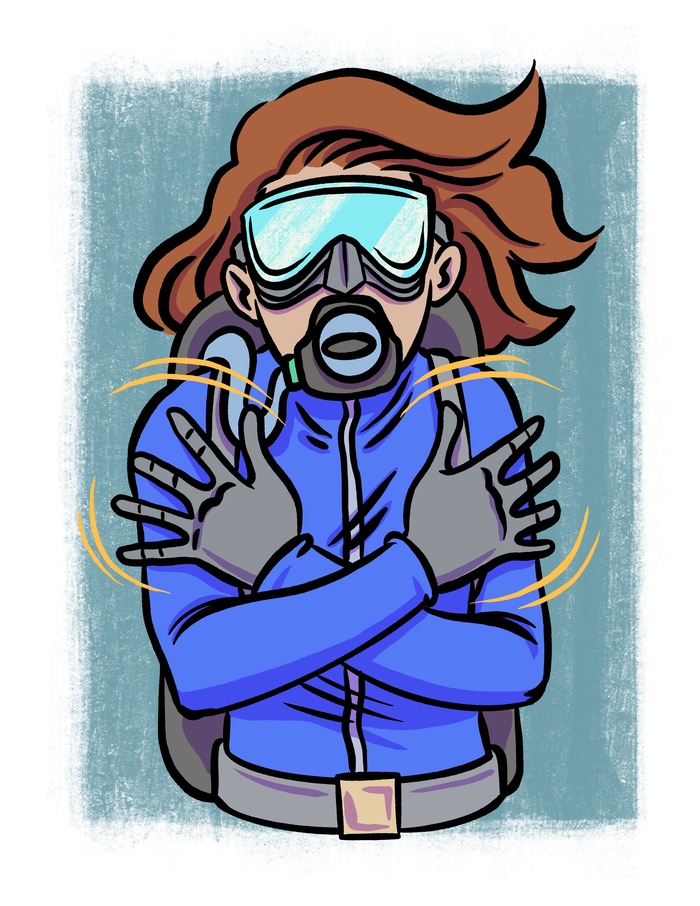
7. “How Much Air Do You Have?”
Ask your divers or buddies how much air they have to make sure you’re turning the dive with enough time to get back to the boat or shore.
How to do it: Take two fingers and tap them onto your other flattened hand.
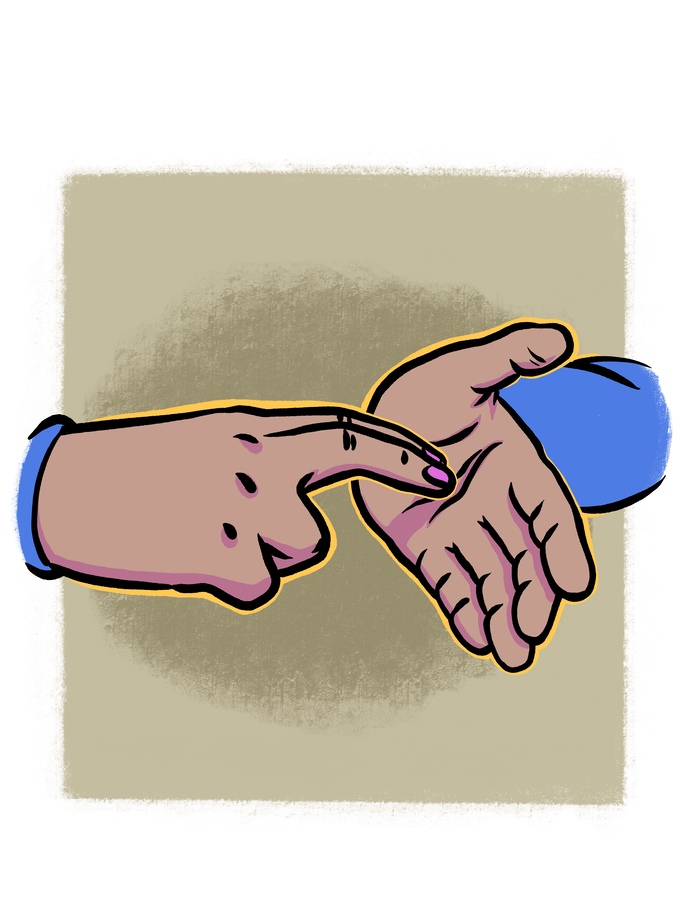
8. “Low on Air”
Not necessarily an emergency signal, the low air signal is still an important one. It allows other divers to know that you need to end your dive and slowly start ascending so that you don’t end up running out of air.
How to do it: Hold a closed fist against your chest.
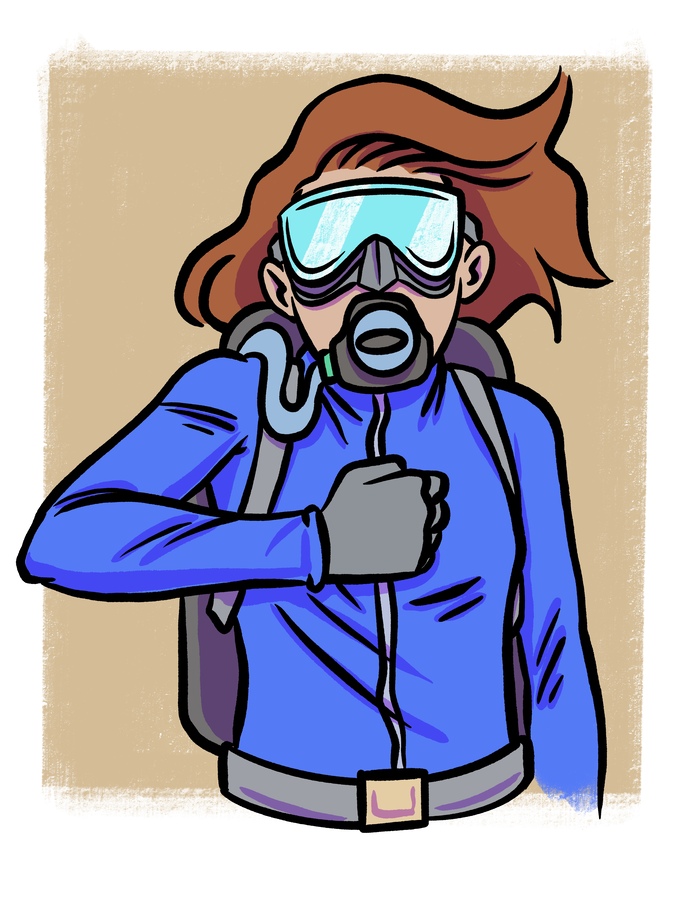
9. “Out of Air”
This emergency scuba signal is used to inform fellow divers when they have no air – whether because they have run out or something has happened that their equipment is not working properly.
This is not something that should be happening if pre-dive checks are taking place and divers are cognizant of their air consumption during the dive, it’s always best to be prepared.
How to do it: Move a flat hand across your throat in a slicing motion.
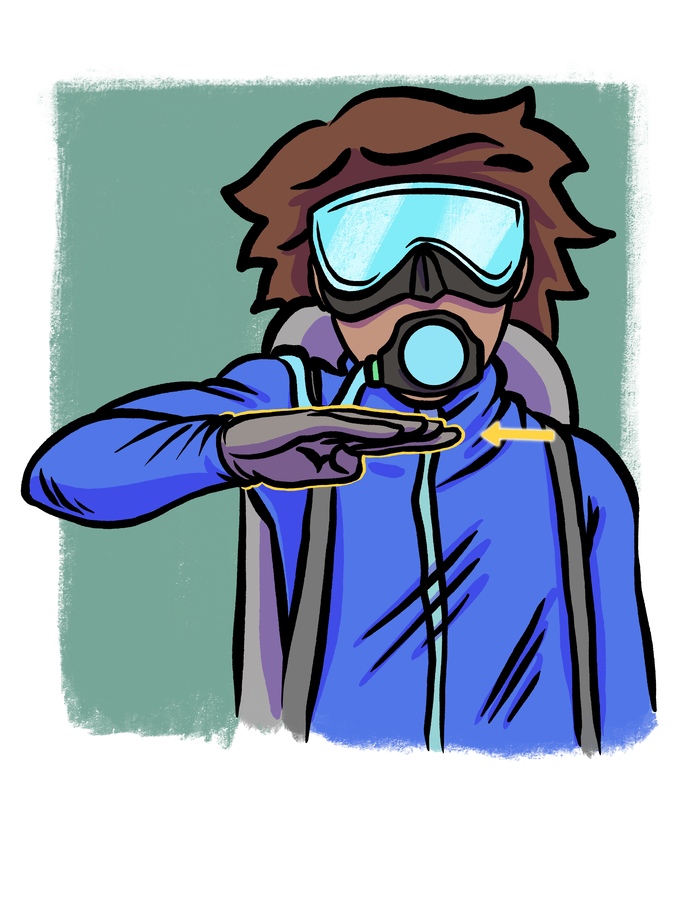
10. “Share Air”
If you or your buddy is out of air or having trouble with their air source, use this signal to indicate you need to share or use their alternate air source.
How to do it: Take a flat hand and motion back and forth between your mouths.
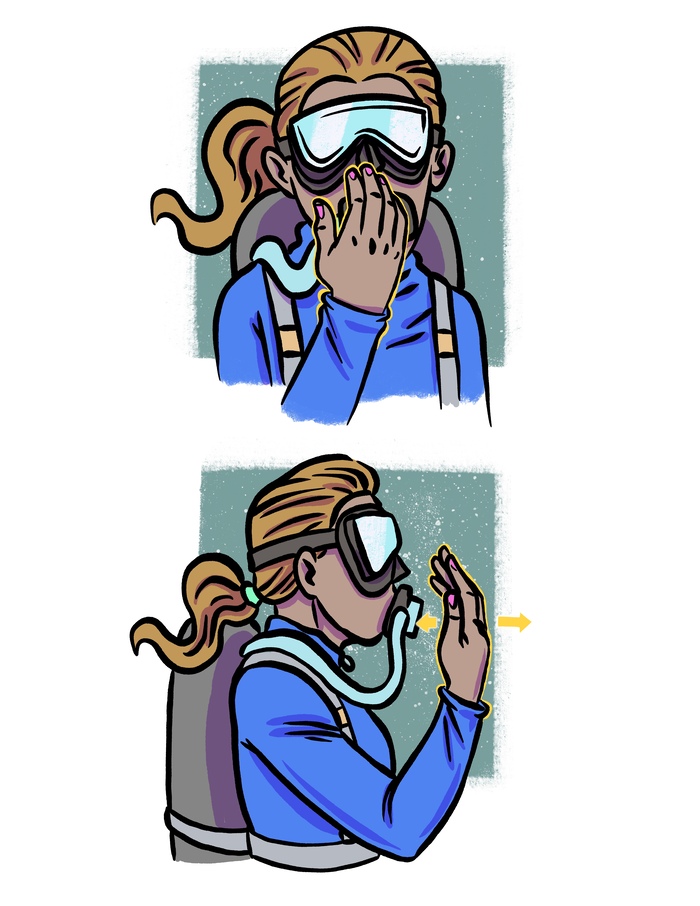
11. “OK” (Underwater)
The “OK” hand signal, a demand response signal, is usually the first one a new diver will learn and probably the one that you’ll use the most.
It gets used to ask if other divers are okay and also as a response to say “yes, I’m okay.” Unless, of course, something is wrong.
How to do it: Join your thumb and index finger to form a loop and then extend the remaining three fingers up.
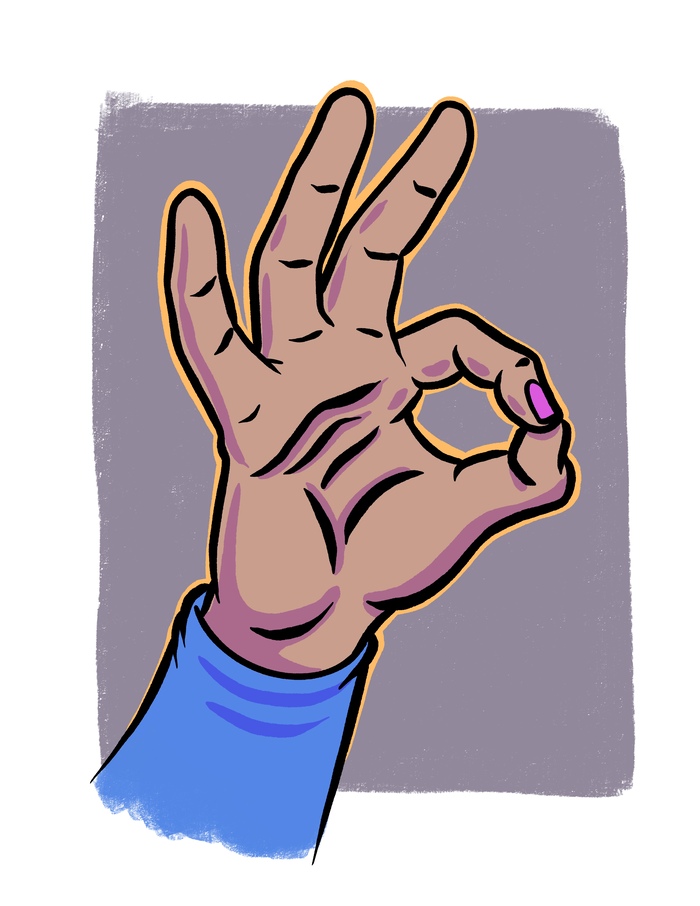
12. “Something’s Wrong” (Underwater)
Let other divers know there’s a problem by using the “Not OK” signal and then pointing to the source of the problem.
How to do it: Using an open, flat hand facing downwards, rotate it slowly up and down as if to say “so-so.”
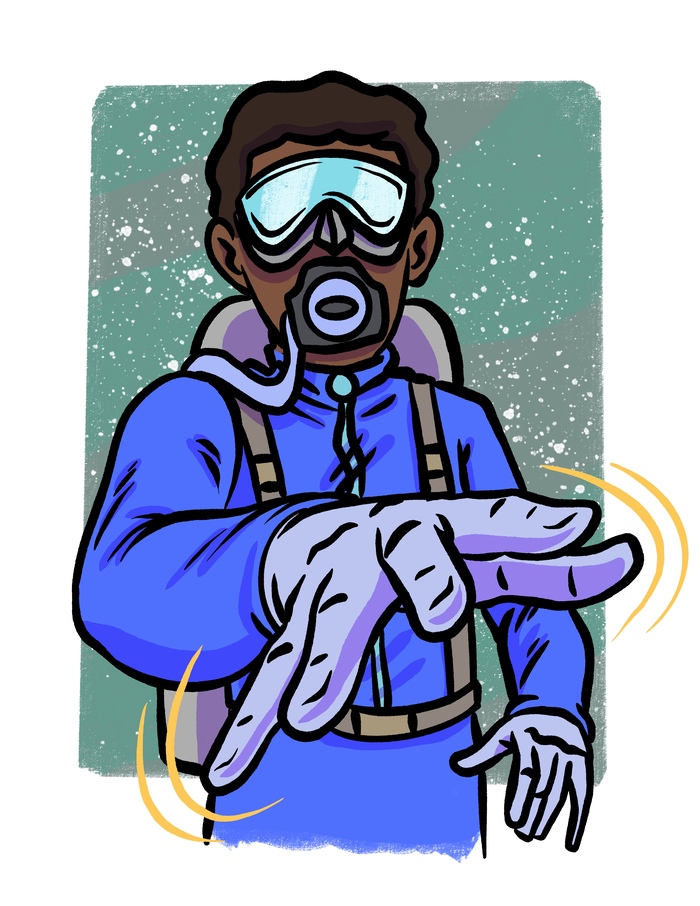
13. “Ears Not Clearing”
Probably one of the most common problems is trouble equalizing. It’s usually a fairly simple fix, but still, something that’s best to communicate with your buddy.
How to do it: Use the “Not OK” signal first (above) and then point to your ear.
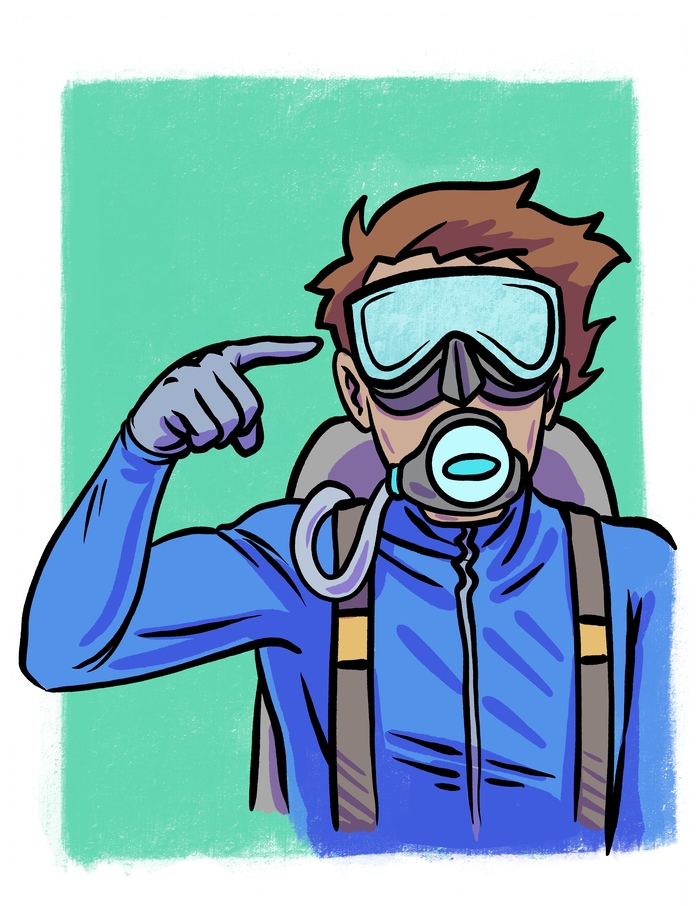
14. “Stop”
This is used to communicate with others to stop. Recreational divers generally use the open hand while technical divers often use a closed fist.
How to do it: Hold a flat hand with the palm facing forward.
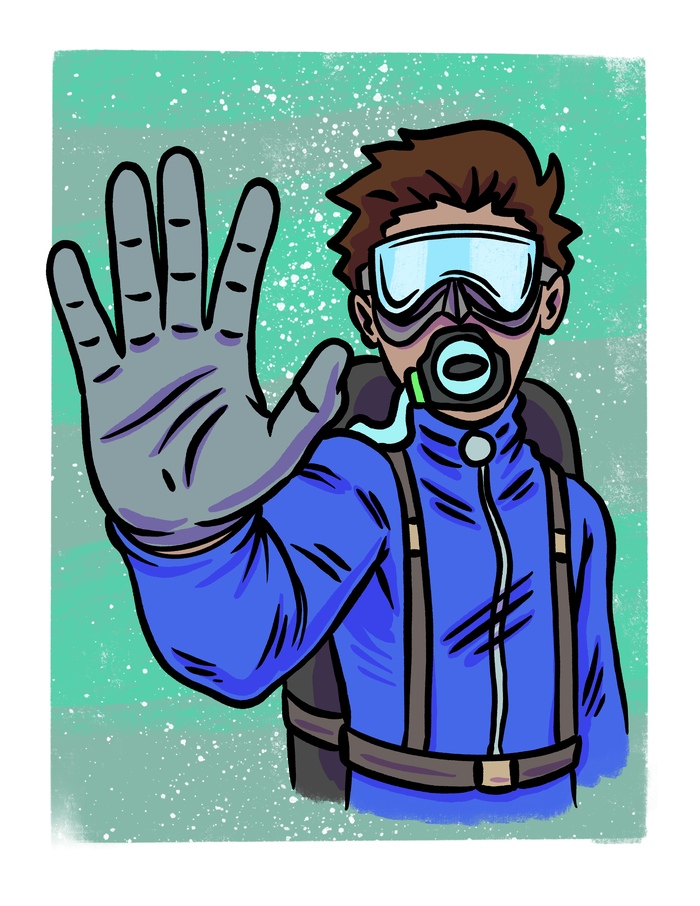
15. “Turn the Dive, Go Back”
This signal is used to let your buddy know it’s time to turn around and head back towards the shore or the boat. This is usually based on air consumption.
How to do it: Take your finger and swirl it around in a circular motion.
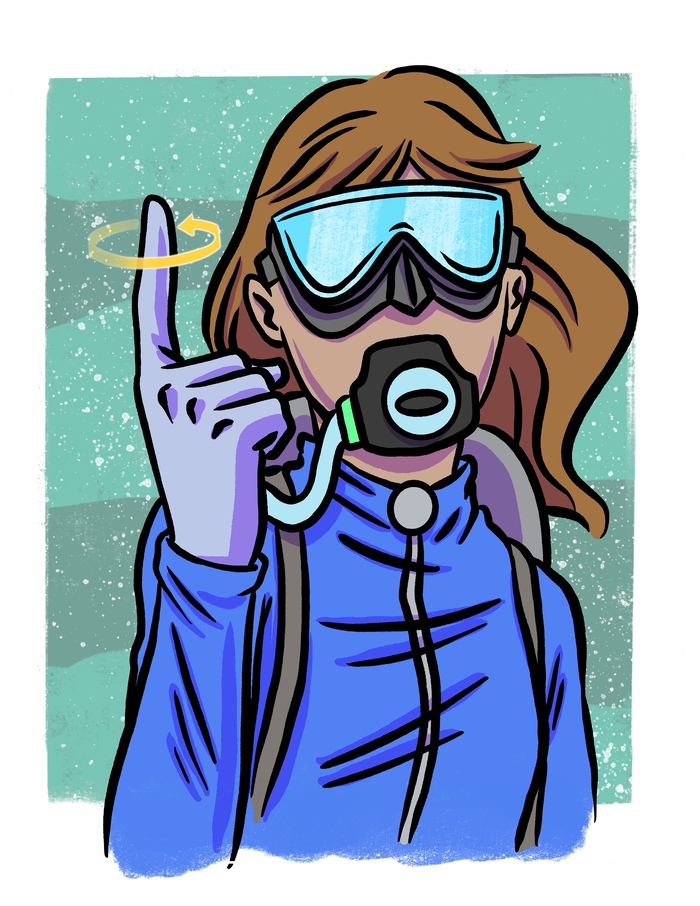
16. “Level Off”
This signal is used to communicate with others to maintain or remain at a particular depth. This may be because you’ve reached the planned maximum depth or the depth for making a decompression or safety stop.
How to do it: Extend a flat hand with the palm facing down and move your hand side to side.
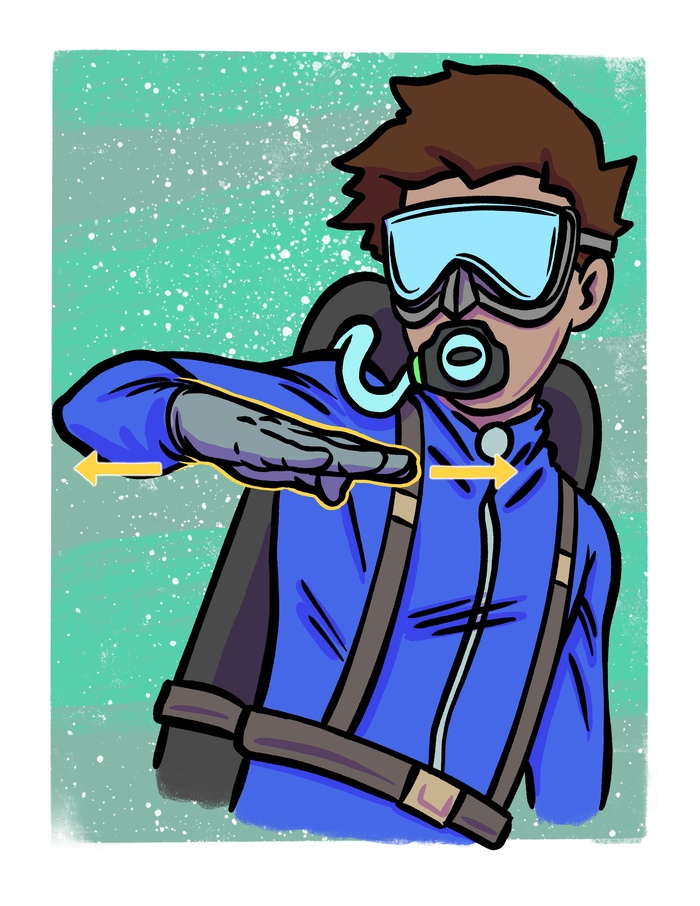
17. “Safety Stop”
This signal is used to inform divers that you have reached the safety stop depth and that everyone should level off for at least three minutes.
The safety stop depth and time frame may depend on several factors. However, three minutes at 15 feet depth is typical.
How to do it: Hold the “Level off” signal over the “Ascend” signal. It is also common to use three fingers instead of a thumbs-up as most safety stops are three minutes long for recreational divers.
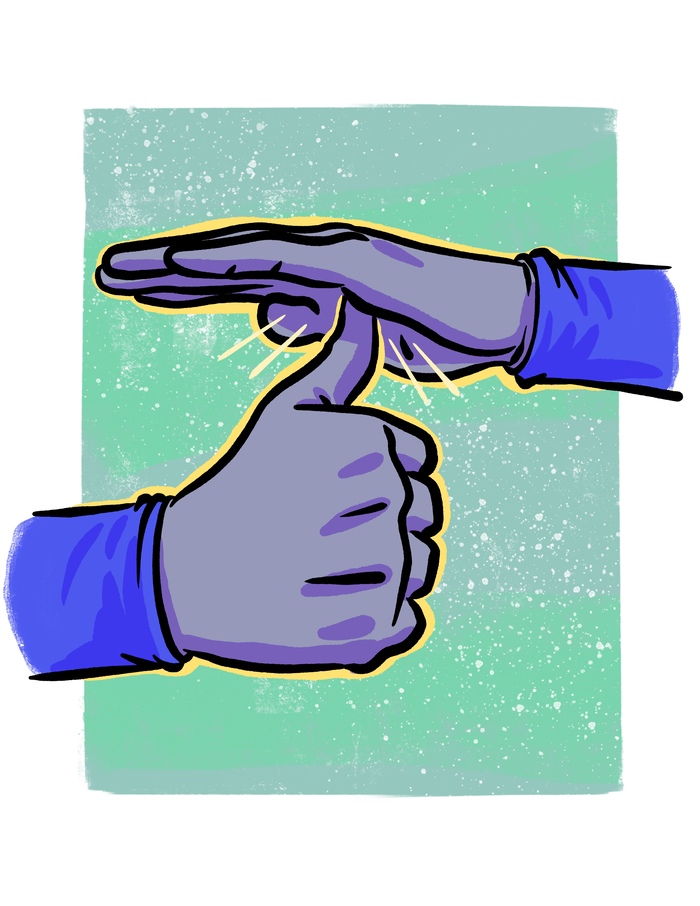
18. “Go Up, End the Dive Now”
Not to be confused or accidentally used as the “OK” signal is the thumbs-up. Use this signal to communicate that it’s time to ascend and end the diver.
This can be used if the diver is feeling uncomfortable for any reason and wants to end the dive. It’s also used just at the end of the dive to communicate it’s time to go up.
How to do it: The universal thumbs-up.
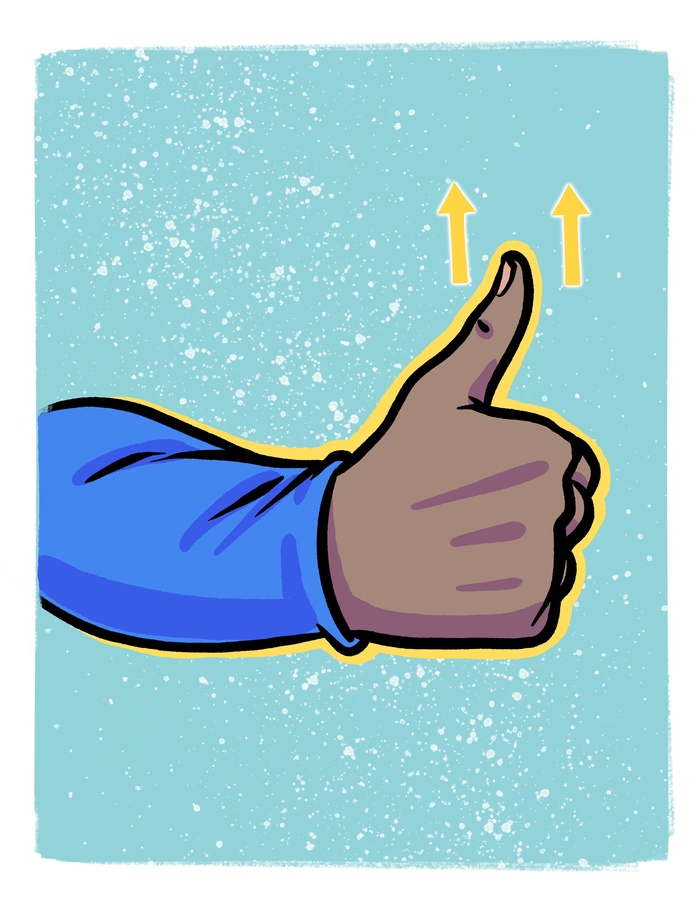
19. “You Lead, I’ll Follow”
Let your buddy know that you’ll follow their lead. Or, let your buddy know that you’ll take the lead.
How to do it: Point at your buddy first with that finger leading if you want them to lead.
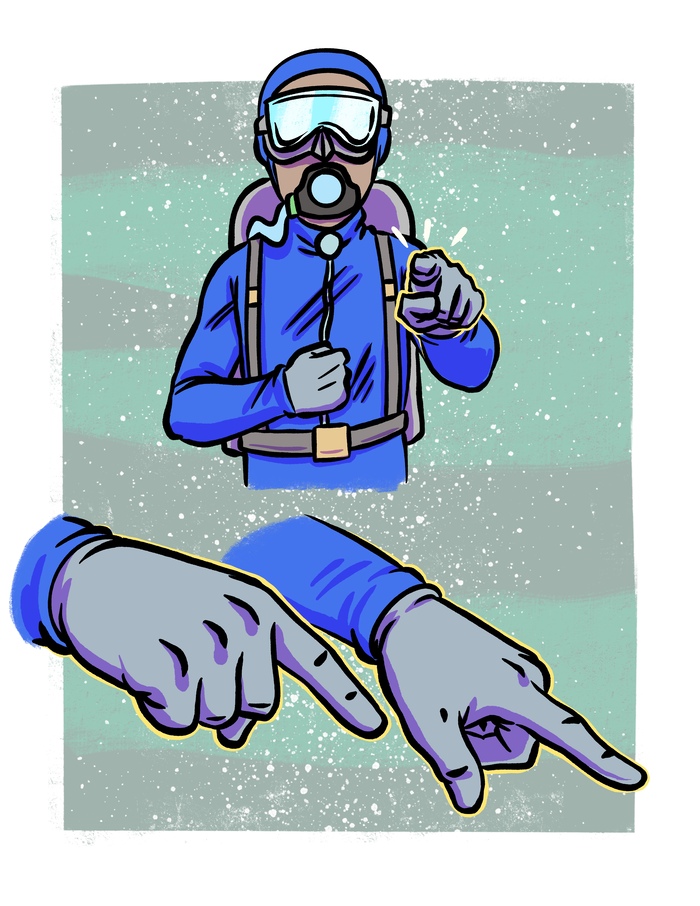
20. “Cramp”
A cramp underwater can be painful and immobilize you. Let your buddy know you have a cramp so they can know you may need a minute before continuing or help you if needed.
How to do it: Repeatedly open and close your fist.
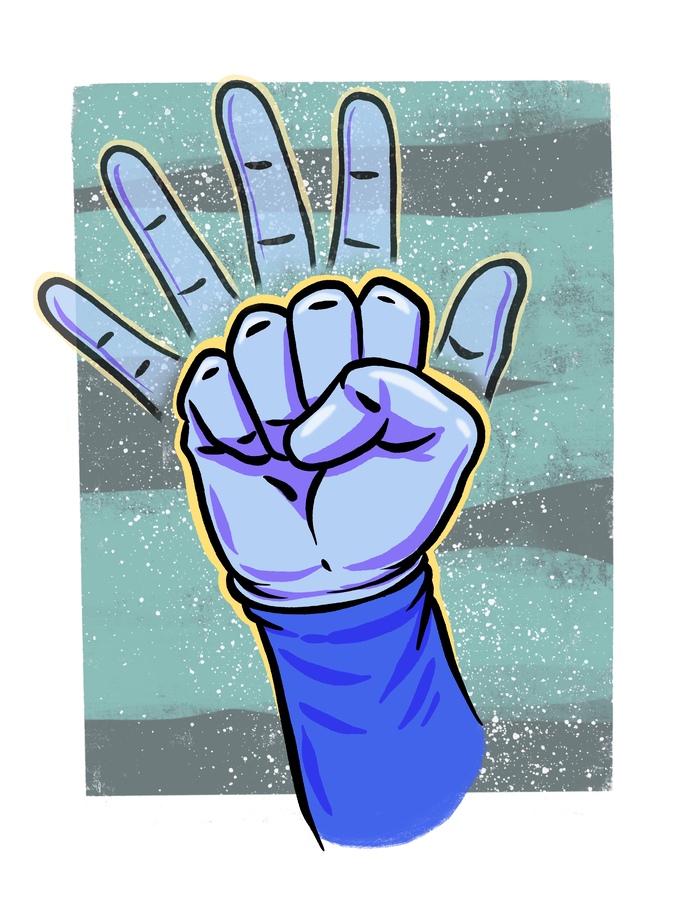
- 9 Weird Things To Do In Dublin, Ireland - April 13, 2024
- 14 Weird Things To Do In Indianapolis, Indiana - April 13, 2024
- Saudi Sands: Discovering Arabia’s Cultural Tapestry - April 1, 2024




No. 17 is not a safety stop signal…. this is a signal ‘go up to my level’…. The safety stop signal uses 3 fingers because it means 3 minutes and the hand has 5 fingers and means the 5m depth level. These signals are not interchangeable and mean something completely different. Very nice graphics. Who is the author?